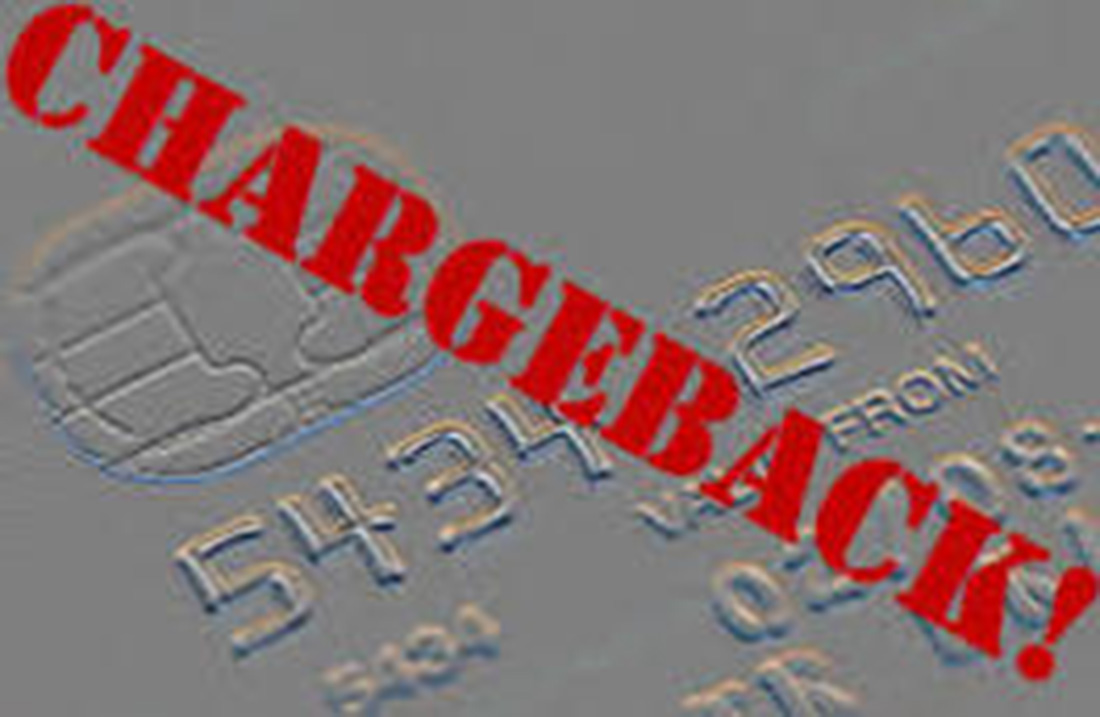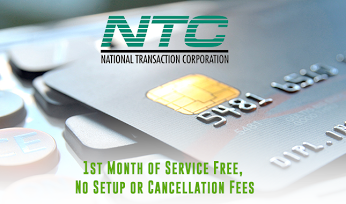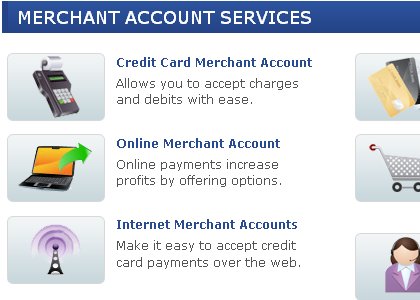
September 24th, 2020 by Admin
With more retailers than ever before embracing e-commerce, the fraud journey is becoming a focus for many. It is clear, though, why retailers have paid more attention to the customer journey. After all, in addition to shaping a customer’s overall experience, a customer’s journey determines whether or not they will make a repeat purchase. Too often, however, when focusing solely on the customer journey, the fraudster’s journey remains overlooked. To bring the fraud journey into focus, we need to understand what it really is and where retailers should be placing their efforts.
Like the customer journey, the fraud journey is the path fraudsters take when interacting with a brand. In the case of the fraud journey, we consider the actions a fraudster takes to commit fraud. Understanding the fraud journey and focusing on the fraudster’s actions will enable online retailers to dramatically reduce fraud conversion rates and ultimately prevent fraud.
It’s not by chance that the customer’s journey and the fraudster’s journey are often mentioned together. In their attempt to satisfy customers while also detecting and preventing fraud, many retailers are faced with an impossible juggling act: Do I prevent fraud or give my customers the experience they want? True, balancing between the two, enabling the paths to co-exist, is challenging, yet it can be achieved. Taking the time to understand the intricacies of the fraud journey can help reduce false positives and cut down on chargebacks.
The True Cost of Chargebacks
Chargebacks. The very word sends shivers down the spine of even the most experienced online retail fraud fighters—with good reason. Chargebacks end up costing retailers in additional fees as well as in customer dissatisfaction and it’s nearly impossible to truly evaluate the cost of chargebacks.
It’s estimated that for every $100 in chargebacks, retailers end up paying $240! But the problem with chargebacks goes far beyond any fees or penalties incurred. The issue with chargebacks is that if a customer gets to the point where they have to request a chargeback, the damage has already been done.
Why Does the Fraud Journey Matter?
Let’s consider the forecast that e-commerce is expected to make up 22 percent of all global retail sales by 2023. Or that it’s predicted that U.S. e-commerce sales will jump 18 percent due to Covid-19. E-commerce sales are at an all-time high, and there are no signs this trend is going to slow down anytime soon. This emphasizes even more the need to focus on the fraud journey. The fraud journey has an impact when building an effective chargeback management strategy and it is directly linked to customer retention and acquisition.
The fraud journey gives one an in-depth understanding of users who could be fraudsters, based on suspicious behavior. Retailers looking to up their fraud prevention and chargeback management game, need to have a clear understanding of the fraud journey. This understanding will make it easy for them to differentiate actions a legitimate user would take, from fraudulent actions. For example, a change of the shipping address upon login indicates a possible fraudulent action. Carefully considering the behavior of a legitimate customer at every stage of the customer journey can help isolate suspicious activities with more accuracy, and thus cut down on false positives.
Fraud Prevention: The Ultimate Juggling Act
Understanding chargebacks and how to prevent them, starts with understanding how retailers approach fraud prevention. In cases where retailers focus on detection and prevention at the payment stage, or even only one part of the payment stage, fraudsters are able to successfully move through their journey undetected until it is too late.
If a fraudster’s activity is detected as suspicious and flagged only at the payment stage, gives an opportunistic fraudster plenty of opportunities to monetize the service by other means before their presence is detected. This could include everything from promo abuse and referral abuse to new account fraud.
That’s exactly why a more advanced fraud prevention and detection approach is required. For example, using technologies such as behavioral biometrics will enable retailers to stop a fraudster long before the payment stage, before any real damage is done, and will help cut down on chargebacks.
Is it really that simple? Retailers are rightfully concerned with the need to ensure that detection of fraud early in the fraud journey, early enough to prevent damage including chargebacks, will introduce as little friction as possible into the customer’s journey. At times it seems retailers can’t win. If they flag an activity as suspicious based on strict rules, they might find themselves with a rise in false positives and possibly disappointed legitimate customers. Other times retailers rely on fraud detection and prevention at the payment stage, ignoring any fraudulent activity, which happens before that, throughout the customer journey. Either way, with fraudulent activities getting more sophisticated, retailers are dealing with a growing number of chargebacks due to fraud.
In-depth understanding of the fraud journey, identifying and monitoring its various touchpoints, will help retailers to reduce fraud and still maintain the balance between customer satisfaction and security.
Proactive Chargeback Management
The common passive-reactive approach to chargeback management is proving to be insufficient as fraudsters are increasingly using tools such as bots and emulators to scale their attacks. Behavioral biometrics-based fraud detection introduces a proactive approach to counter advanced fraud. As opposed to focusing on login or checkout only, and reacting too late, behavioral biometrics focuses on user behavior throughout the entire customer journey, making it easy to identify suspicious and potentially fraudulent behavior at its earliest stage, enabling to stop the fraudster in his tracks, before damage is done.
Adopting advanced technologies like behavioral biometrics will provide retailers with visibility and insight into the entire fraud journey, leading to better, data-driven decision making, pre-transaction prevention and cut down chargebacks.
SecuredTouch is the expert in adaptive fraud detection solutions for online retailers and financial institutions. Using machine learning, the technology continuously analyzes hundreds of behavioral data points to differentiate between human and non-human behaviors, human to device interactions and behavioral anomalies to provide early detection of fraud. The solution identifies sophisticated fraud throughout the customer journey while simultaneously improving the user experience. Businesses benefit from reduced drain on internal resources and increased transaction rates, ultimately leading to an improved bottom line. Today, our award-winning solutions are used by some of the world’s largest retailers and financial institutions.
By Ran Wasserman, CTO, SecuredTouch – Sponsored Content
Posted in Best Practices for Merchants, Credit card Processing, Credit Card Security, e-commerce & m-commerce, Electronic Payments, Financial Services, Internet Payment Gateway, Mail Order Telephone Order, Merchant Account Services News Articles, Merchant Services Account, Mobile Payments, Mobile Point of Sale, nationaltransaction.com, Small Business Improvement, Visa MasterCard American Express Tagged with: chargeback, fraud, Fraud prevention, fraud protection, National Transaction Corporation

September 11th, 2020 by Admin
The chargeback process was introduced more than four decades ago as a consumer-protection mechanism. It was meant to inspire consumer confidence in payment cards, which were still a novel concept at the time. Fast-forward to today, though, and these forced payment reversals have evolved into a significant problem for online merchants.
Chargeback abuse—commonly known as friendly fraud—is a major source of loss. In fact, chargeback issuances resulting from friendly fraud were expected to reach $50 billion annually in 2020, according to Mercator Advisory Group.
Even then, this figure is a low estimate. It doesn’t account for current trends in a post-Covid environment, where we’ve seen a dramatic increase in friendly fraud. These attacks were already up by the end of March, and there’s no sign that they’re going to slow down.
Covid-19 might look like the source of the problem on a superficial level. If we dig deeper, though, we see four underlying factors behind the preexisting upward trend in chargeback filings:
- More fraudsters view the CNP environment as the “channel of least resistance;”
- Inconsistency in technologies and regulations across different markets;
- The rise of mobile banking;
- The response by card networks like Visa and Mastercard.
These four factors carry diverse ramifications for the market. For instance, roughly $118 billion in e-commerce transactions are declined each year, according to Javelin Strategy & Research. Most of these rejected purchases are false positives, meaning the merchant unnecessarily rejected the purchase in hopes of avoiding a chargeback.
Clearly, there’s a growing disconnect between merchants, financial institutions, and card networks regarding how best to address this situation. We can see this reflected in the fact that the rate of chargeback issuances in North America is expected to significantly outpace those in the European market. This is attributed to factors like strong customer authentication protocols required by the Revised Payment Services Directive (PSD2), and more widespread use of 3-D Secure technology.
The pressure is on for industry players to find more comprehensive solutions for chargebacks. These solutions must be data-driven and adaptable, though. Otherwise, the growing disconnect between cardholders, merchants, financial institutions, and card networks will exacerbate existing problems in the market, leading to further losses.
The good news is that, in the meantime, there are strategies merchants can employ to address these concerns. For instance, even though friendly fraud operates by concealing itself behind false chargeback reason codes, it’s still helpful to have a clear understanding of what each reason code means in context.
Merchants can’t avoid friendly fraud in the same way they can detect criminal attacks or eliminate merchant errors. However, they can minimize friendly fraud risk by adopting key best practices, including:
- Notifying customers to remind them about recurring payments;
- Keeping organized and well-documented transaction records;
- Using delivery confirmation when shipping physical goods;
- Providing easy access to round-the-clock, live customer service;
- Providing a quick response to any refund or cancellation requests.
Also, if a merchant identifies a chargeback as friendly fraud, it’s important to engage that dispute through the representment process. This is a complex, time-consuming process, which is why many merchants opt to outsource their chargeback management. It’s still possible to conduct the process with in-house management. However, it will require strong evidence to support the merchant’s case, such as:
- A legible sales receipt
- A tracking number
- Any emails or transcripts of communications you’ve had with the customer
- Delivery confirmation information
- A record of in-store pickup
- Photographic evidence (when available)
This evidence needs to be contextualized with a chargeback rebuttal letter, explaining why the original transaction was valid. Also, merchants are on a tight schedule. In most cases, they have only a few days to provide a response to their acquirer.
Chargeback management can be a difficult and confusing process. But, with the problem of chargeback abuse only set to grow over time, it’s something merchants can’t afford to take for granted.
—Monica Eaton Cardone is the chief operating office and cofounder of Chargebacks911, Clearwater, Fla.
COMMENTARY: What Will the Future Hold for Chargebacks in Digital Payments?
Monica Eaton-Cardone September 11, 2020 Competitive Strategies, E-Commerce, Fraud & Security, Issuing/Originating, Mobile Commerce, Point-of-sale, Transaction Processing
Posted in Best Practices for Merchants, Credit card Processing, Credit Card Security, e-commerce & m-commerce, Electronic Payments, Internet Payment Gateway, Uncategorized, Visa MasterCard American Express Tagged with: chargeback, chargebacks, ecommerce, ecommerce merchant, ecommerce merchants, ecommerce sites, electronic payment, electronic transactions, fraud protection, mobile payment security, strategies, transaction security

February 16th, 2017 by Elma Jane
Chargeback Cycle
A chargeback is also known as a reversal; a credit card transaction that is reversed to a merchant because of the customer or customer’s bank disputes charges. Other reasons include fraud, credit card processing errors, authorization issues and non-fulfillment of copy requests. There’s an assigned reason code for every chargeback. Reason codes may vary by VISA and MasterCard.
How does the chargeback cycle work?
1. A customer files a complaint to card-issuing bank.
2. The bank sends disputed transaction (chargeback) to acquirer.
3. Acquirer receives chargeback and resolves it or forwards to the merchant for documentation.
4. Merchant accepts chargeback or addresses issues and resubmits to Acquirer.
5. Acquirer represents the chargeback to the issues once acquirer agrees the merchant has properly addressed it.
6. The issuer resolves the dispute by reposting to the cardholder’s account.
7. The cardholder receives dispute information and may be rebilled or credited.
Every merchant that offers credit card processing to its customers should be concerned about chargebacks to their merchant account.
Lower your risk of chargebacks by following the tips below:
Verify card logos, credit card numbers, identification, customer signature and check the expiration date.
Call for voice authorization if the card stripe doesn’t work or if the terminal is down or cannot authorize.
Authorize every transaction.
Be sure your customers are familiar with your return or exchange policy.
Posted in Best Practices for Merchants Tagged with: bank, cardholder, chargeback, credit card, customer, merchant, merchant account, transaction

February 14th, 2017 by Elma Jane
Prevent Freeze, Holds, and Terminations
Common ways to prevent freezing; holds and termination to your account.
Minimize Chargebacks – chargeback should always be limited. An excessive number of chargeback whether won or lost is a red flag.
Minimize Fraud – if fraud is suspected, your account will be frozen pending an investigation.
One account per business type – if you have multiple businesses, you must have a separate account. If one account is being used for a different business altogether, that’s the quickest way for an account to be fully terminated.
Sell only the services or products you said you’d sell – selling other product or services could violate your Marketing Services Agreements.
Stay within your average monthly volume and ticket – an unusually high processing volume or average ticket is one of the fastest ways to get your funds held. To avoid this, notify your provider of an expected busy month. Call your provider for a large transaction before running it.
Use appropriate payment account types – card present (retail) and card-not-present accounts (internet). Card present means both customer and their credit card are present in the store. Card-not-present means card nor the person are not physically present at the time of the transaction. A large number of card present transactions on a card-not-present account or vice versa can result in a hold or termination of an account.
For Electronic Payments call now 888-996-2273 or got to www.nationaltransaction.com and click on get started
Posted in Best Practices for Merchants Tagged with: card present, card-not-present, chargeback, electronic payments, fraud, provider

February 6th, 2017 by Elma Jane
Managing Chargeback:
Chargeback – a forcible reversal of funds due to a credit card holder’s dispute of the transaction. Chargebacks can be a huge headache for a business owner, it can affect a business’ ability to maintain a credit card processing account and put funds on hold.
How can you protect your business and maintain a good processing account? First, you need to know the basic chargeback types:
- Clerical – duplicate billing, incorrect amount billed or refund never issued.
- Fraud – consumer claims they did not authorize the purchase or claims identity theft. Fraud disputes can be more complicated since they are the result of fraudulent consumer purchases.
- Quality – consumer claims to have never received the goods as promised at the time of purchase.
- Technical – expired authorization, non-sufficient funds or bank processing error.
Managing chargebacks is an important piece and it can certainly be reduced, to save your business, time, money and reputation.
For Electronic Payments Set up call now 888-996-2273 or visit www.nationaltransaction.com and click get started.
Posted in Best Practices for Merchants Tagged with: bank, chargeback, consumer, credit card, fraud, funds, processing account, refund, transaction

January 23rd, 2017 by Elma Jane
What Makes Up The Rate That You’re Paying?
Most rates are made up of three parts:
Interchange – Goes to the bank that issued the card, and is typically made up of a flat rate plus a percentage of the sale.
Assessments – Go to card network like Visa, MasterCard, Amex, Discover etc.
Processor fees – Fees involved with providing the service, risk assessments, the type of transaction, and the size of the transaction. This portion includes the margin between the total rate and the two previous parts, along with any incidental fees, like chargeback or statement fees.
There are a lot more intricacies of what makes up a credit card rate, but this information gets you off to a good start. If you’re interested in learning more about electronic payments, check our website www.nationaltransaction.com or call now 888-996-2273 and talk to our Payment Consultant.
Posted in Best Practices for Merchants Tagged with: bank, card, card network, chargeback, credit card, merchant, payment, processor, transaction

December 21st, 2016 by Admin
Ways to Prevent CHARGEBACK:
Provide Receipts for every single transaction. Receipt serves as a good reminder to the purchase they make and decreases the likelihood of a charge back. Have the conditions of sale written on the receipt
Be clear about refunds, returns and cancellation policies – include refund, return and cancellation policy on your website.
Make sure charge descriptions are clear. Use dynamic descriptors – with dynamic descriptors, you can include specifics like the product purchased, business name, business location and contact information. Include a number as part of the charge description.
Provide accurate descriptions of products and services – accurate product descriptions are particularly important for online ecommerce where customers often dispute transactions because the product they received is not as it was described online.
Get signed proof of delivery products – especially if you’re an online ecommerce vendors that ships products regularly.
Communicate with customers about renewals – if your customer accounts are set to automatically renew, make sure you notify those customers of their renewal months leading up to the renewal day.
When a cardholder contacts their credit card-issuing bank and asks for a refund on a transaction for a purchase or service made on their card is called chargeback.
Most Common Reasons for Chargebacks:
Point-of-sale processing errors
Customer disputes like, customer doesn’t recognize the charge, customer claims they didn’t receive the item they ordered.
Fraud, or potential fraud (customer claims the transaction is fraudulent – the purchase was made with a stolen card).
Posted in Best Practices for Merchants Tagged with: bank, cardholder, chargeback, credit card, customer, ecommerce, fraud, online, point of sale, transaction

September 30th, 2016 by Elma Jane
The Process of Underwriting!
Some of the key things that are reviewed in setting up electronic payments.
Getting a merchant account, is an important step for any businesses that sells services.
Merchants need to understand the following process:
Billing policy – Businesses that bill too far in advance are at greater risk for a chargeback. Knowing how does the business bill is important.
Example: A travel agency who sold travel destination packages six months in advance and cancel the trip.
Business type – Businesses at a higher risk are industries with vague products or services; which are more highly to be examined in detail than those with concrete offerings.
Chargeback history – A business with a lot of chargebacks tied to their old merchant account will have a hard time with underwriting. A chargeback can be issued by the cardholder; if the merchant does not fulfill the product or services being rendered as agreed.
Owner/signer credit score – Credit score plays a big role during merchant account underwriting. However, some processors will review financial statements instead in the case of poor credit. if the original signer’s credit score is insufficient, businesses with multiple partners can also try the application with a different signer.
Requested volumes – This are weighed against the processing volumes requested on the application. New businesses usually start with smaller volumes to build a trustworthy relationship before increasing their processing volumes.
Years in business – Long terms in business go a long way in merchant account underwriting; it speaks for their legitimacy and they are more prepared to respond to something like a chargeback and often have a more stable cash flow.
Posted in Best Practices for Merchants, Travel Agency Agents Tagged with: cardholder, chargeback, credit, electronic payments, merchant account, processors, travel agency

September 29th, 2016 by Elma Jane
MerchantConnect is a great tool for merchants because it contains all the information that a merchant needs to manage their electronic payment activity. Furthermore, it’s fast, easy and secure!
- Merchant can either view or update account information and make changes.
- Find copies of statements.
- Furthermore find valuable products and services to help merchant with their business.
View recent deposits and other information about account activity including:
- Batch Details
- Chargeback
- Retrieval Status
- Deposit History
The merchant can also find news and information to help manage payments at your business. Learn how to:
- Best Qualify Transactions
- Reduce Risk
- Manage Chargebacks
- Find reference guides to help operate your payment terminal
The merchant can also utilize the BIN Lookup when you need to inquire about which bank issued a particular card. Simply enter the first six digits on the card and you will receive the information on the issuing bank, including contact information.
If you need a to set-up an account and want to use this tool give us a call at 888-996-2273
Posted in Best Practices for Merchants, Electronic Check Services, Electronic Payments Tagged with: bank, card, chargeback, electronic payment, merchants, payments, risk, terminal, transactions

August 25th, 2016 by Elma Jane
Chargeback bumps still not clear, yet some says consumers are taking advantage of the chargeback system, while others think this increase is due to EMV implementation. Same as other countries experienced.
Whatever the reason, these chargebacks are causing stir in the payments industry.
Merchants should know two facts because of the tide in chargebacks:
- Merchants should not be accountable for chargebacks on valid, non-fraudulent cards without chips.
- Additionally, merchants who do not have EMV terminals are at a higher risk for fraud.
- The merchant is held responsible not the bank if fraud is involved as a result of card swipe.
There are a few things that merchants can do to prevent chargebacks.
- Always swipe non-chip cards rather doing it manually.
- Ask for a signature and verify each transaction.
- Be on the lookout for fraudulent cards.
- EMV chip card should not be swipe or manually keyed in.
- Follow chip card processing procedures, insert them correctly and guide your customers through the chip transaction process.
- If the chip card payment fails, ask for an alternate form of payment. Most of all do not override or swipe the chip card.
- If you have to manually enter a card number, use the security code, check the expiration date and further more take an imprint.
Better be equipped to stop chargebacks by adopting few changes in your business before they happen. If your business is not yet EMV compliant, give us a call at 888-996-2273 or visit us at www.nationaltransction.com
Posted in Best Practices for Merchants, EMV EuroPay MasterCard Visa Tagged with: chargeback, EMV, fraud, merchants, payments, terminals






